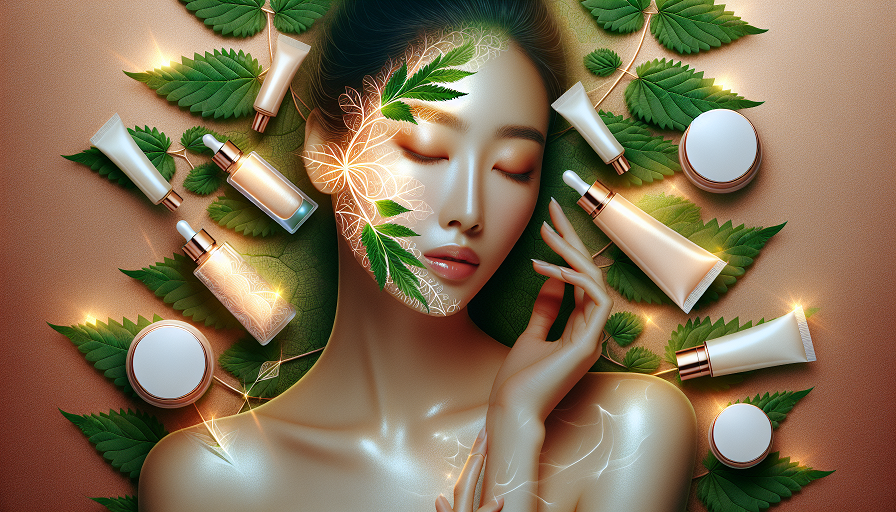
Hormones have a say in nearly everything our bodies do, including how hydrated—or dry—our skin feels. You may have noticed dry patches, tightness, or dullness cropping up seemingly out of the blue. Often, hormone fluctuations are the hidden culprit behind these changes in skin hydration.
Contents
How Hormones Influence Skin Hydration
Hormones are chemical messengers that regulate countless processes, including those involved in skin health. Estrogen, progesterone, testosterone, and even cortisol impact how our skin maintains moisture and elasticity. When these hormones fluctuate, skin hydration can suffer, leading to dryness, dullness, and other changes that may leave skin feeling anything but soft and supple.
The Role of Estrogen in Hydration
Estrogen is like the MVP of skin hydration for women. It supports the production of natural oils and hyaluronic acid, a substance that binds water to keep skin plump and hydrated. Estrogen also encourages the production of collagen, which gives skin its structure and resilience. When estrogen levels are high, skin usually feels softer, smoother, and more hydrated. But when estrogen drops, so does skin hydration.
Progesterone and Oil Production
Progesterone also plays a part in skin hydration, but it affects oil production differently. During certain times in the menstrual cycle, progesterone levels rise, increasing oil production and sometimes making skin feel a bit oilier. But in the days before menstruation, progesterone drops, which can lead to drier, more sensitive skin. Progesterone and estrogen work together, and any imbalance between the two can cause changes in moisture levels.
Testosterone and Sebum Regulation
Though often thought of as a “male hormone,” testosterone is present in all bodies and affects skin oil production. Testosterone stimulates the sebaceous (oil) glands to produce sebum, the skin’s natural oil. When testosterone levels are high, oil production increases, which can prevent dryness. But if testosterone levels drop too low, or if there’s an imbalance with other hormones, sebum production slows down, leaving skin feeling dry and tight.
Why Hormone Fluctuations Lead to Dry Skin
Hormone levels fluctuate for various reasons—menstrual cycles, menopause, stress, and even lifestyle changes. These shifts impact skin hydration by affecting natural oil production, moisture retention, and skin’s ability to protect itself. Here are some common scenarios where hormone fluctuations can lead to dry skin.
Menstrual Cycle Changes
Throughout the menstrual cycle, hormone levels rise and fall, influencing skin hydration. Estrogen is typically higher in the first half of the cycle, leading to more hydrated, plump skin. But after ovulation, estrogen drops while progesterone rises, and skin can feel drier and less resilient. Just before menstruation, both estrogen and progesterone levels are low, which often leads to increased dryness and sensitivity.
2Menopause and Declining Estrogen
As women enter menopause, estrogen levels drop significantly, affecting the skin’s ability to retain moisture. This leads to thinner, drier skin that may feel rough or look dull. The skin’s production of natural oils also decreases, which exacerbates dryness and can make fine lines and wrinkles more noticeable.
Stress and Cortisol
When you’re stressed, your body releases cortisol, the stress hormone. High cortisol levels can disrupt other hormones, dehydrate the skin, and break down collagen, leading to dry, fragile skin. Chronic stress can make skin hydration a constant struggle, as elevated cortisol interferes with the skin’s ability to hold onto moisture.
Pregnancy and Hormone Shifts
During pregnancy, estrogen and progesterone levels rise, which can initially improve skin hydration and glow. However, some women may experience dryness due to rapid shifts in hormone levels, particularly after childbirth when hormones drop back to pre-pregnancy levels. These fluctuations can lead to sudden dryness, sometimes making skin feel stretched or flaky.
Best Ingredients for Rehydrating Hormone-Depleted Skin
If hormone fluctuations are leaving your skin feeling parched, choosing the right skincare ingredients can make a big difference. Here are some powerhouse ingredients that can help restore hydration and combat dryness.
Hyaluronic Acid
Hyaluronic acid is a hydration hero, capable of holding up to 1,000 times its weight in water. It works by attracting moisture from the environment to the skin, keeping it plump and hydrated. For hormone-depleted skin, using a hyaluronic acid serum can help replenish moisture and improve skin texture.
Glycerin
Glycerin is a humectant that, like hyaluronic acid, draws water to the skin’s surface. It’s effective in maintaining skin’s moisture levels, even during periods of hormonal dryness. Glycerin-based moisturizers can be especially beneficial for skin that feels tight or uncomfortable.
Ceramides
Ceramides are lipids (fats) that make up the skin barrier. When hormone levels drop, the skin barrier can weaken, leading to moisture loss. Ceramides help repair this barrier, locking in hydration and preventing water from evaporating. Look for moisturizers with ceramides to keep skin hydrated and protected.
Squalane
Squalane mimics the skin’s natural oils, providing lightweight hydration that won’t clog pores. It’s especially useful for dry skin caused by hormonal changes, as it restores softness without feeling heavy or greasy.
Niacinamide
Niacinamide, or vitamin B3, helps strengthen the skin barrier, reducing water loss. It’s also anti-inflammatory, which can calm any redness or irritation associated with dry skin. Adding niacinamide to your routine can improve skin’s resilience, especially during hormonal shifts.
Building a Hydrating Skincare Routine for Hormonal Dryness
When hormone fluctuations cause dryness, a consistent skincare routine focused on hydration can make all the difference. Here’s a simple routine to help keep your skin moisturized and balanced.
Morning Routine
1. Gentle Cleanser: Start with a gentle, hydrating cleanser that won’t strip your skin of natural oils.
2. Hyaluronic Acid Serum: Apply a hyaluronic acid serum to lock in moisture and give your skin a plumper appearance.
3. Moisturizer with Ceramides: Use a ceramide-rich moisturizer to strengthen the skin barrier and prevent moisture loss.
4. Sunscreen: Finish with a broad-spectrum SPF to protect against environmental damage, which can worsen dryness.
Evening Routine
1. Gentle Cleanser: Cleanse to remove any impurities and makeup from the day.
2. Hydrating Serum: Apply a serum with glycerin or niacinamide to attract and retain moisture.
3. Moisturizer with Squalane or Ceramides: Lock in hydration with a rich moisturizer containing squalane or ceramides.
Lifestyle Tips for Managing Hormonal Dryness
Skincare is essential, but lifestyle habits can also play a role in managing dryness caused by hormonal fluctuations. Here are some additional tips for keeping your skin hydrated from the inside out.
Stay Hydrated
Drinking enough water is fundamental to maintaining skin hydration. Aim for at least eight glasses a day, and more if you’re active or live in a dry climate. Proper hydration helps your skin retain moisture and reduces the severity of dryness.
Incorporate Healthy Fats
Healthy fats, like those found in avocados, nuts, and fatty fish, support the skin’s lipid barrier, which helps keep moisture locked in. Including these foods in your diet can help your skin stay soft and hydrated, especially during hormonal changes.
Get Quality Sleep
Sleep is the time when your body (and skin) recovers. Poor sleep can lead to higher cortisol levels, which can worsen dryness. Aim for 7-8 hours of sleep each night to allow your skin to repair and replenish itself.
Hormone fluctuations are a normal part of life, but they don’t have to mean chronically dry skin. By understanding the link between hormones and skin hydration, you can make informed choices in your skincare routine and lifestyle to help your skin stay soft, smooth, and resilient—no matter what your hormones are up to.

